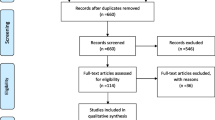Abstract
Purpose
The Surgical Apgar Score (SAS) is a simple tally based on intra-operative heart rate, blood pressure and blood loss; it predicts 30-day major postoperative complications and mortality in different surgical fields, but no validation has been performed in general orthopaedic surgery.
Methods
A prospective assessment of the SAS in 723 consecutive patients undergoing major and intermediate orthopaedic procedures was performed in an 18-month period. The SAS was calculated immediately after surgery, and the occurrence of major complications or death was registered within a 30-day follow-up.
Results
Thirty-seven patients had ≥1 complication (5.12 %). The complication rate did not augment as the score decreased (SAS 9–10 = 6.56 %; SAS 7–8 = 2.62 %; SAS 5–6 = 7.21 %; SAS ≤4 = 10.2 %), the relative risk did not augment as the score decreased and the likelihood ratio did not increase with decreasing SAS values, except in the subgroup of patients undergoing spine surgery. The C-statistic was 0.59 (95 % confidence interval 0.48–0.69), a weak discriminatory value. Using a threshold of 7 to define high-risk and low-risk patients, the SAS allowed risk stratification only for spine surgery.
Conclusions
The SAS does not predict 30-day major complications and death in patients undergoing general orthopaedic surgery, but it is useful in the subgroup of patients undergoing spine surgery.



Similar content being viewed by others
References
Mohamed K, Copeland GP, Boot DA, Casserley HC, Shackleford IM, Sherry PG, Stewart GJ (2002) An assessment of the POSSUM system in orthopaedic surgery. J Bone Joint Surg Br 84:735–739
Gawande AA, Kwaan MR, Regenbogen SE, Lipsitz SA, Zinner MJ (2007) An Apgar score for surgery. J Am Coll Surg 204:201–208. doi:10.1016/j.jamcollsurg.2006.11.011
Regenbogen SE, Bordeianou L, Hutter MM, Gawande AA (2010) The intraoperative Surgical Apgar Score predicts postdischarge complications after colon and rectal resection. Surgery 148:559–566. doi:10.1016/j.surg.2010.01.015
Prasad SM, Ferreria M, Berry AM, Lipsitz SR, Richie JP, Gawande AA, Hu JC (2009) Surgical apgar outcome score: perioperative risk assessment for radical cystectomy. J Urol 181:1046–1052. doi:10.1016/j.juro.2008.10.165, discussion 1052–1043
Zighelboim I, Kizer N, Taylor NP, Case AS, Gao F, Thaker PH, Rader JS, Massad LS, Mutch DG, Powell MA (2010) “Surgical Apgar Score” predicts postoperative complications after cytoreduction for advanced ovarian cancer. Gynecol Oncol 116:370–373. doi:10.1016/j.ygyno.2009.11.031
Haynes AB, Regenbogen SE, Weiser TG, Lipsitz SR, Dziekan G, Berry WR, Gawande AA (2011) Surgical outcome measurement for a global patient population: validation of the Surgical Apgar Score in 8 countries. Surgery 149:519–524. doi:10.1016/j.surg.2010.10.019
Ohlsson H, Winsö O (2011) Assessment of the Surgical Apgar Score in a Swedish setting. Acta Anaesthesiol Scand 55:524–529. doi:10.1111/j.1399-6576.2011.02424.x
Regenbogen SE, Ehrenfeld JM, Lipsitz SR, Greenberg CC, Hutter MM, Gawande AA (2009) Utility of the surgical apgar score: validation in 4119 patients. Arch Surg 144:30–36. doi:10.1001/archsurg.2008.504, discussion 37
Thorn CC, Chan M, Sinha N, Harrison RA (2012) Utility of the Surgical Apgar Score in a district general hospital. World J Surg 36:1066–1073. doi:10.1007/s00268-012-1495-2
Reynolds PQ, Sanders NW, Schildcrout JS, Mercaldo ND, St Jacques PJ (2011) Expansion of the surgical Apgar score across all surgical subspecialties as a means to predict postoperative mortality. Anesthesiology 114:1305–1312. doi:10.1097/ALN.0b013e318219d734
Wuerz TH, Regenbogen SE, Ehrenfeld JM, Malchau H, Rubash HE, Gawande AA, Kent DM (2011) The Surgical Apgar Score in hip and knee arthroplasty. Clin Orthop Relat Res 469:1119–1126. doi:10.1007/s11999-010-1721-x
Romano PS, Schembri ME, Rainwater JA (2002) Can administrative data be used to ascertain clinically significant postoperative complications? Am J Med Qual 17:145–154
Copeland GP, Sagar P, Brennan J, Roberts G, Ward J, Cornford P, Millar A, Harris C (1995) Risk-adjusted analysis of surgeon performance: a 1-year study. Br J Surg 82:408–411
Cram P, Lu X, Kaboli PJ, Vaughan-Sarrazin MS, Cai X, Wolf BR, Li Y (2011) Clinical characteristics and outcomes of Medicare patients undergoing total hip arthroplasty, 1991–2008. JAMA 305:1560–1567. doi:10.1001/jama.2011.478
van der Sluis CK, Timmer HW, Eisma WH, ten Duis HJ (1997) Outcome in elderly injured patients: injury severity versus host factors. Injury 28:588–592
Conflict of interest
The authors declare that they have no conflict of interest.
Author information
Authors and Affiliations
Corresponding author
Rights and permissions
About this article
Cite this article
Urrutia, J., Valdes, M., Zamora, T. et al. Can the Surgical Apgar Score predict morbidity and mortality in general orthopaedic surgery?. International Orthopaedics (SICOT) 36, 2571–2576 (2012). https://doi.org/10.1007/s00264-012-1696-1
Received:
Accepted:
Published:
Issue Date:
DOI: https://doi.org/10.1007/s00264-012-1696-1




